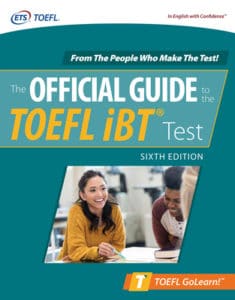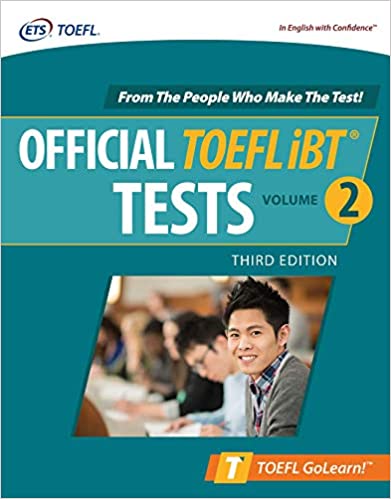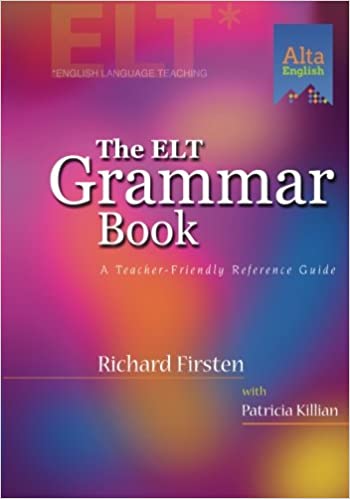 Nobody makes a practice question like the people who make the test, right? There are hundreds of places you can find practice TOEFL questions, and hundreds of them will be poorly made. There’s a much smaller number—only a handful, really—of places you can look for well made practice, Magoosh TOEFL being one of them, if I do say so. But there’s only one place you can get official practice, and that’s from ETS books such as The Official Guide to the TOEFL Test, Sixth Edition.
Nobody makes a practice question like the people who make the test, right? There are hundreds of places you can find practice TOEFL questions, and hundreds of them will be poorly made. There’s a much smaller number—only a handful, really—of places you can look for well made practice, Magoosh TOEFL being one of them, if I do say so. But there’s only one place you can get official practice, and that’s from ETS books such as The Official Guide to the TOEFL Test, Sixth Edition.
So, in a way, this review is over before it begins. This book has the most accurate-to-the-test practice questions, period. (And at the time of this writing, it’s among the few books that reflects the newer 2019 changes to the TOEFL!) Well, that accuracy is the main attraction, but to be honest, the Official Guide is stronger in some areas than others. Let’s break down the most important part of any TOEFL prep book and see how good the Official Guide really is:
Report Card
Authenticity of practice material: A+
Amount of practice material: B
Quality of explanations: C+
Skill building material: F
Test strategy and advice: C
Writing style: B
Included Practice Material
While it may have the best practice TOEFL questions, The Official Guide to the TOEFL offers a middling amount of material, really. There are four full practice tests, which is great. Those alone make about 12 hours of practice material. But outside of those practice tests, the examples are a bit sparse. For some reason, the authors included a good amount of Reading samples; there are six additional passages outside of the practice tests, with additional passage excerpts and individual sample questions. But there is very little Speaking practice, and no audio for any examples outside of the practice tests. Since the Speaking, Listening, and Writing sections all rely heavily on audio recordings, this cripples the material outside of the practice tests.
What’s more, there are no skill-building exercises in the book, such as brainstorming practice, identifying grammar errors, or any of the many other helpful exercises you’ll find in other books. There is a “Writer’s Handbook” at the end, but it simply lists common English mistakes (in an apparently random order) and does not offer any practice exercises for these small lessons. There are also occasional tips listed for effective test-taking, and a lot of information about about how the test works, but no activities to apply this knowledge and build actual skills. The lack of skill-building material is a huge flaw.
The included downloadable software is a great resource. On it, there are four practice tests in a format that’s similar (but not identical) to the real test. But there is one problem: these are the same four tests from the pages of the book. This is a minor complaint, though, since the audio in the software is essential to authentic TOEFL practice. I would recommend taking the tests digital only; the on-page version of the exam is better for review of the test after you take it. Note also that the book includes an answer key and transcripts for all tests, so it’s a good companion to the software. There are answer explanations as well, although those are less useful. I’ll get to that next.
Explanations
This is one of the most important parts of any test preparation book. If you get a question wrong while practicing, you have to know why you got it wrong. The Official Guide doesn’t really provide this for reading and listening questions.
Yes, there are explanations, but for Reading and Listening, they’re really not helpful. There are no explanations for why wrong answers are actually wrong, only brief descriptions of why the correct answers are correct. And usually, this reads similar to “A is correct because it is the one answer that works.” ETS’s answer explanations for these two sections simply aren’t very insightful!
The best part of the explanations are the Speaking and Writing responses. These are real responses from real test takers! For Speaking, there are a total of 36 of them—one high and one low from each Speaking task on each test, with comments from the grader. Similarly, there are many examples of TOEFL Writing essays; there’s a sample of each score (1-6) of each essay in each practice test, along with grader comments. Again, that’s 36 sample essays with comments. This actually is very helpful. So ETS’s explanations are not all bad.
Test Strategy and Advice
I sometimes think that ETS wants people to believe that there are no strategies for increasing your score on the TOEFL. This would make their test look perfectly designed: if that was true, then the test would only measure your English abilities, rather than your test-taking abilities. That would explain why there is such minimal strategy in the book. Ultimately, though, there is no such thing as an exam that perfectly tests only language skills, with no emphasis on test-taking abilities. Fortunately for us, there are strategies that can help you to improve your TOEFL scores. Only ETS doesn’t really address them.
The only real advice on how to approach specific question types is in the descriptions of each type, and it’s mostly limited to the obvious advice (for example, you’re encouraged to refer to your notes when answering Listening questions). There are no practice exercises for learning these strategies. This is another big issue.
Meanwhile, many TOEFL books have the opposite problem from the Official Guide. That is, they try to convince you that the test is all strategy. It’s not. The most important way to raise your score is simply to get more English experience. So I have to agree with the Official Guide’s writers on this point: you have to practice your English outside of doing bookwork and test practice to get a higher TOEFL score. The book does a good job of stressing this fact.
But it becomes a bit repetitive when you see the same advice for the third time. Yes, reading English language publications is a good way to get practice for TOEFL Reading. Is it a revolutionary thought? Not really. Does it help me to see that advice more than once? I probably already knew it anyway, so no.
Writing Style
The writing is generally clear and concrete, which is great. It’s not especially exciting, but that’s okay. It would be nice if there was less focus on the dry, factual information and more focus on the test taker’s experience, but this is not a huge problem.
It’s great that some of the more difficult vocabulary words in the book are defined in footnotes, but this book does include many descriptions and explanations which are not written for non-native speakers. It would be helpful if those non-practice text sections (such as explanations) were very clear and easy to read. If you are already scoring above 80 on the TOEFL, this shouldn’t be a problem. But for the lower levels of TOEFL takers, the English level of the writing might be too difficult.
The Final Word
The Official Guide to the TOEFL test is the best source for realistic practice tests. It is a great resource for learning the basics of the test and getting some truly authentic practice. I recommend it as an important part of any student’s prep materials. But for skills-building, test strategies, and general advice, you’ll want additional support from other sources. And again, Magoosh TOEFL is a great one-top shop for supplements tot he official material.





